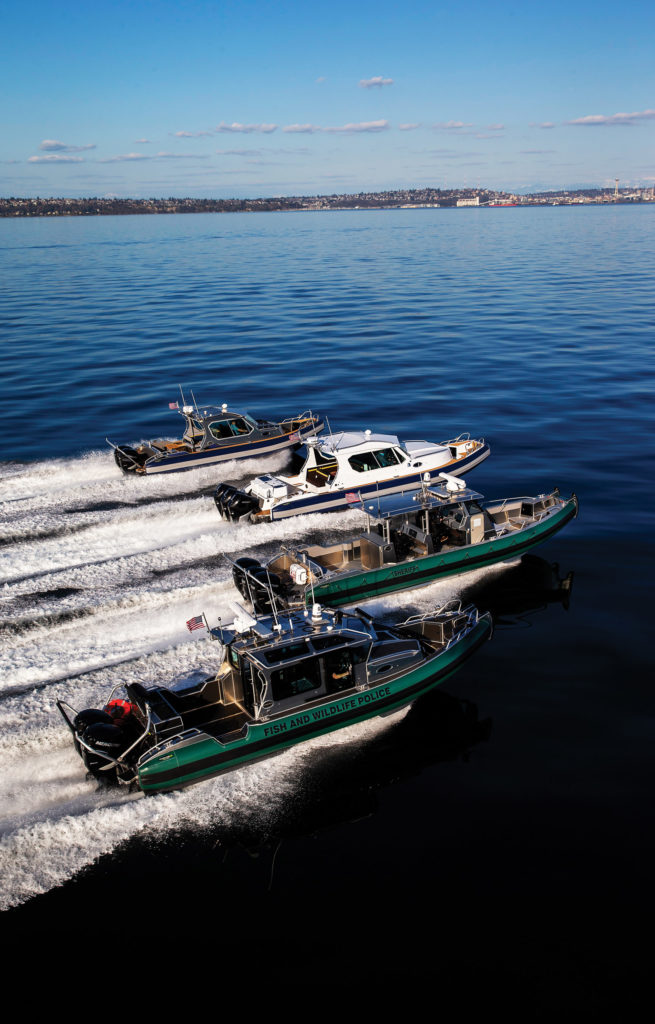
Bremerton’s Inventech Marine Wins $103M Coast Guard Bid
In a significant boost to the Northwest maritime economy, Bremerton-based Inventech Marine Solutions was awarded a contract by the U.S. Coast Guard to build up to 200 “over the horizon” cutters, known as CB-OTH Vs, for use as fast-response cutters during offshore patrols. The contract will last up to 10 years, with an estimated total value of $103.6 million.
The Inventech model chosen was based on the boat-builder’s 22° monohull platform, measuring 25’6” in length and 8’6” abeam, available in both outboard and inboard engine configurations. The winning demonstration boat weighed 6,785 pounds and burned 10.8 gph of fuel from an 86-gallon tank. The boat was powered by a Cummins QSB 6.7L engine linked to a Hamiltonjet waterjet, producing 480hp and a top speed of 40 knots.
The award was the result of a two-phase selection process, with phase one concerned with technical attributes, risk ratings, past performance, and price. This evaluation narrowed down the applicants to four companies: Inventech; Blackfish Solutions of Anchorage, AK; Gravois Aluminum Boats of Jeanerette, LA; and MetalCraft Marine US of Watertown, NY. In phase two, demonstration boats from the four finalists were evaluated in multiple locations over a three-month shakedown period. According to the USCG debriefing, Inventech, “exceeded the expectations established in the phase-one evaluation, delivering a boat that, in many situations, performed more capably than proposed.”
USCG also noted that the demonstration boat averaged the highest speeds (30 knots) of any of the competing boats in “Sea State 3” wave-height levels, which are the most common types of sea conditions typically faced by cutters. Test evaluators also said Inventech had “the most capable boat in heavy seas” that showed “a remarkable ability to perform in all conditions while providing crew comfort necessary to reduce fatigue.”
Inventech Marine, known chiefly for its Life Proof Boats models and foam-based FAST collar systems, said it focused mostly on serviceability, prevention of water intrusion, deck drainage, and ergonomics during boat development and construction. The first order for four CB-OTH Vs has been place and this initial fleet will be used for further operational tests and evaluation before the program moves to full production, USCG said. Once the program is underway, the Inventech watercraft will be utilized for search-and-rescue operations, drug and migrant interdiction, living marine resources protection, defense readiness, and coastal security of ports and waterways. For more information on Inventech, go to: inventechmarine.com.
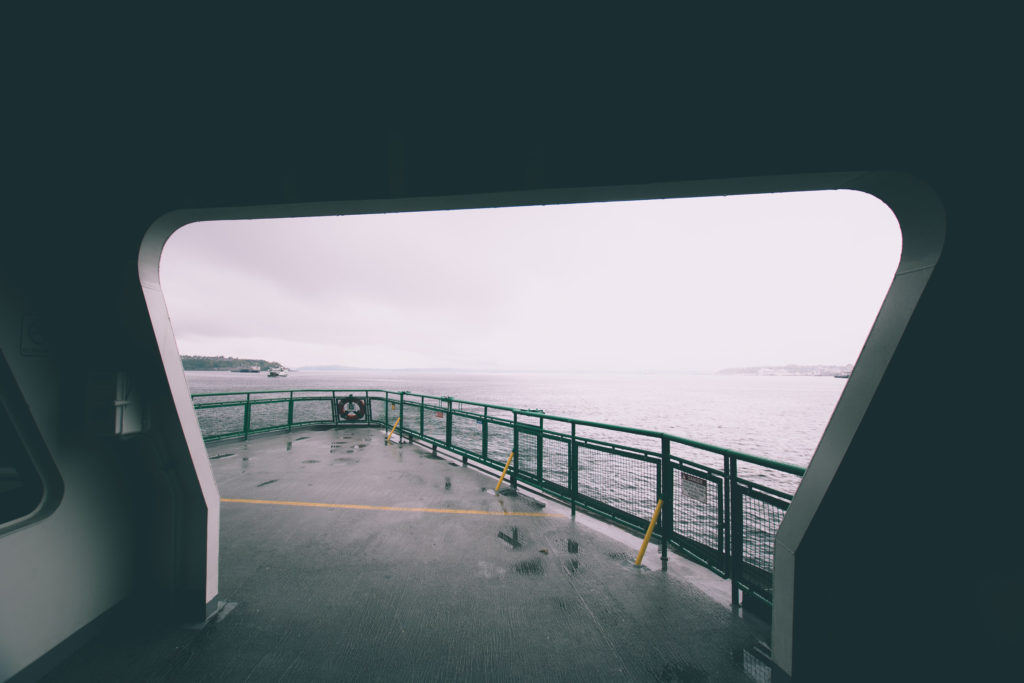
WA State Ferries Gets $38M from Feds for Needed Upgrades, New Des Moines Run
After several years of stress resulting from equipment failures, terminal accidents, and a sharp decline in personnel, partially due to the Covid pandemic, the Washington State Ferry (WSF) system finally got some good news in the form of a $38 million grant from the Federal Highway Administration (FHWA).
The FHWA funds represent the first impacts of the $173 million Ferry Boat Program, which was part of the trillion-dollar federal infrastructure package passed last year in Congress. This year’s allotment is more than double the amount that WSF received last year. WSF said the funds will be used primarily to perform long-delayed upgrades, emergency repairs, and preventative maintenance on the ferry boats. The money will be divided between nine state ferry operations around Puget Sound, as well as the Colville Confederated Tribes near Spokane.
The funds are desperately needed after a year plagued by mechanical breakdowns in the aging ferry fleet that carries an average of 23 million passengers every year. One of the more infamous incidents in 2022 was the July crash of the Cathlamet ferry into the Fauntleroy dock structure in West Seattle, causing serious damage to the boat and terminal pilings.
Delays have been more pronounced this year, WSF said, especially on the Anacortes/San Juans route, where nearly half of all sailings in June were behind schedule. WSF spokesman Ian Sterling said the system typically handles 50% more ferry traffic during the summer months when out-of-town tourist flock to the city, which “inevitably affects the time taken to get everyone on board and ultimately the on-time performance.”
In another rare sign of positive news for passenger ferries in the region, test runs have begun for a fast, passenger-only ferry service running from Des Moines to Bell Harbor Marina in Seattle. The two-month pilot project began in August and is set to last until October 9.
The Chilkat Express hydrofoil boat, managed by Puget Sound Express, makes four trips per day, Wednesday through Sunday. Cruising at 40 knots, the vessel takes about 40 minutes to complete each leg. If ridership is strong enough, more crews and departure times may be added to the run, Puget Sound Express said.
Currently, the City of Des Moines is partnering with the Highline School District in a paid internship program to provide deckhands to work alongside trained crew. Students in the program can receive exposure to work in the maritime industry and earn sea-time credit that can be applied to professional training.
For more information on the state ferry system, visit: wsdot.wa.gov; more details on the Des Moines foot ferry can be found at: desmoineswa.gov.
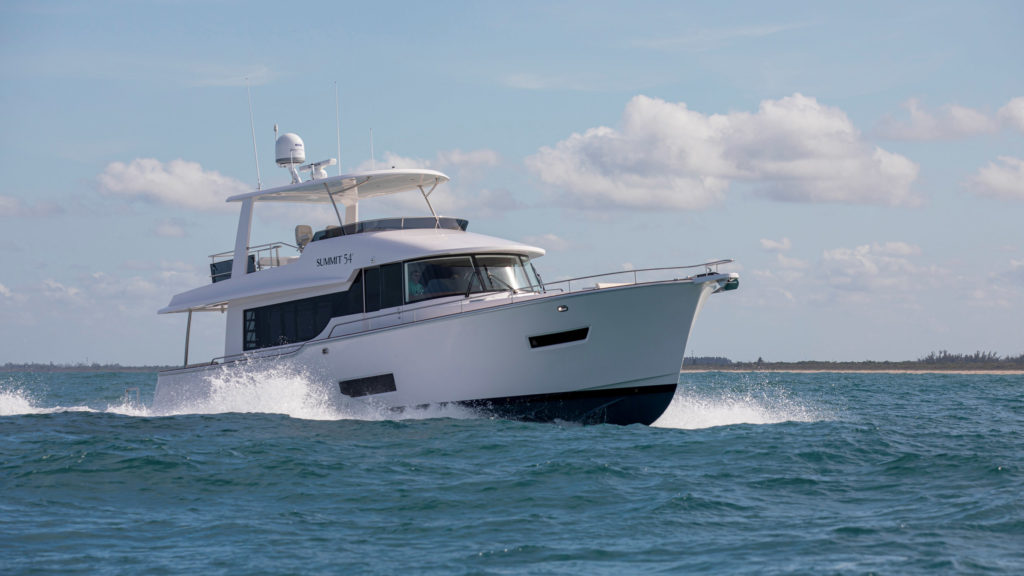
Kadey-Krogen Opens Seattle Sales Office Under New Manager
Florida-based Kadey-Krogen Yachts has opened a new yachts sales office in Seattle and hired industry veteran, Jonathan Cooper, to be the company’s new West Coast sales manager in charge of hiring a dedicated sales team for the Northwest yachting market.
The new office, located on Northlake Way in Fremont, will handle new Kadey-Krogen Yachts sales as well as the company’s newer line, Summit Motoryachts. The office will also handle brokerage listings, Cooper said.
One of the flagships for the company’s new Seattle operation will be the Summit 54. With a length of 58’5” and a beam of 15’10”, the 54 cuts an imposing figure on Elliott Bay, powered by twin Cummins QSB6.7, 542-hp engines. Created in collaboration between Kady-Krogen and renowned naval architect Michael Peters, the Summit 54 model includes a planing hull that helps give the boat an impressive range of 330 miles at 23 knots.
Before joining Kadey-Krogen, Cooper served as art director of PassageMaker magazine, in addition to being the editor there for four years. Previously, Cooper had multiple roles at Grand Banks Yachts, played a crucial role in facilitating new boat sales. He has also traveled the world photographing cruising boats and destinations. With these varied roles in the yachting industry, Cooper said he has developed unique insights to the luxury cruising and bluewater markets, which he can now apply to a company that “essentially pioneered long-distance powerboat cruising.”
For more details on Kadey-Krogen, and their new location, visit: kadeykrogen.com.
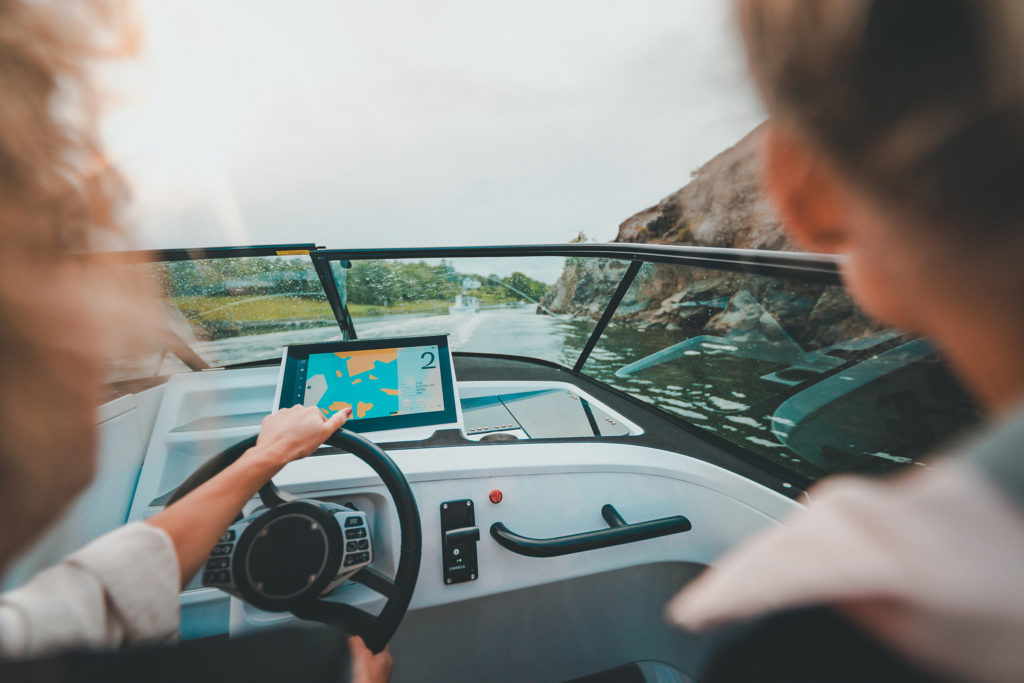
X Shore, Candela, Navier Electrify E-Boaters with Affordable Designs
The salty air of yacht buying these days has a palpable electric crackle mixed in with the brine. As more boaters are turning toward the increased efficiency, falling prices, and significant environmental benefits of electric propulsion, several of the industry’s top e-boat makers—X Shore, Candela, and newcomer Navier—are all introducing exciting new models, powered 100% by renewable energy.
For instance, Swedish e-boat manufacturer X Shore has recently unveiled the much anticipated X Shore 1, its new electric cruiser targeted for an audience that, until recently, could never afford a high-tech, battery-powered vessel. After last year’s debut of its initial e-boat, the Eelex 8000, X Shore refined that basic design with the goal of reducing costs through smaller batteries and greater production efficiencies. As a result, the new X Shore 1 will retail for about $140,000—less than half the cost of its predecessor.
Despite being a little smaller (21 feet, compared with the 25-foot Eelex), the X Shore 1 boasts similar performance, but with a smaller, 63 kWh battery. The company said its 125 kW, 168-hp-equivalent motor can accelerate the super quiet boat to a maximum of 30 knots in a sprint, but its range tops out at 50 miles at its 20-knot cruising speed. The X Shore 1 is scheduled to be available next spring in an either an open-air design or a canopy top version.
Meanwhile, two other Swedish companies—e-boat maker Candela and e-car maker Polestar—are teaming up to produce hyper-efficient batteries for both of their vehicles. By tapping into Polestar’s established automotive battery-charging system, Candela will be able to ramp up production and reduce costs of its sleek, aerodynamic C-8 and P-8 Voyager designs that use hydrofoils to lift the boat over the waves at high speeds. By substantially reducing friction via hydrofoils, Candela’s boats require 80% less energy than conventional boats of the same size, while still achieving speeds of up to 30 knots. With the battery partnerships inked and a recent €24 million investment from EQT Ventures, Candela will now transition to a larger manufacturing plant to increase production of its hydrofoils.
At the moment, it appears the Swedes have the lead on the cutting edge of the e-boat world. But there’s at least one American upstart on the rise—Navier is also looking to ride the hydrofoil concept to success. The startup recently secured $7.2 million in venture capital funding, raised by a group of investors led by Global Founders Capital and Treble VC.
Co-founded by MIT graduates Sampriti Bhattacharyya and Reo Baird, Navier teamed up with legendary Maine-based boat builder Lyman-Morse to construct the new, all-electric Navier 27 hydrofoil, merging Silicon Valley technology with 200 years of boatwright expertise.
The 27-foot carbon-fiber-hulled hydrofoil, designed with the help of naval architect Paul Beaker, is powered by two 50 kW electric motors, reaching speeds of between 18 and 30 knots, with a 75-nautical-mile range at 20 knots. Navier said its debut craft can skim over waves up to 4 feet high, using 90% less power than similarly sized surface boats.
To distinguish it from the competing Candela boats, the Navier 27 has rigid hydrofoil struts that don’t just retract into the hull, they slide up through slots in the decking above to reduce draft and allow the boat to beach itself when needed. The boat is also equipped with an array of sensors to give boaters advanced autopilot control, automated docking technology, and an active collision-avoidance system. As the Navier 27 nears widespread release this fall, there are plans for it to debut at this month’s Fort Lauderdale International Boat Show, featuring the all-season utility N27 Cabin model and the warm-weather oriented N27 Hardtop.
Further information on all three brands can be found on their respective websites: xshore.com; candela.com; and, navierboat.com.
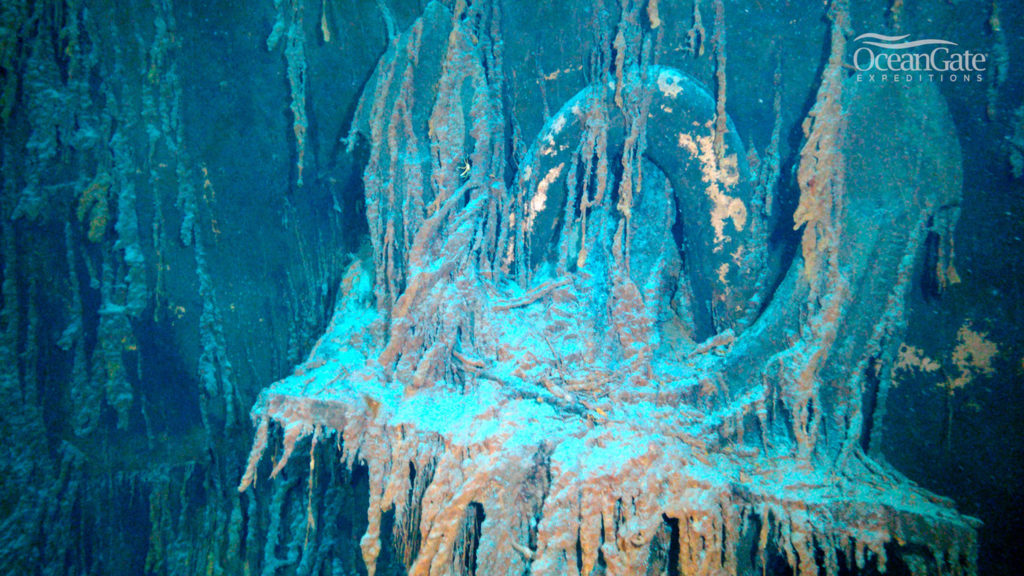
Everett’s OceanGate Releases Stunning 8K Titanic Footage
Our hearts having been going on (and on, and on…) reliving the tragedy of the RMS Titanic for 110 years now. (Spoiler alert! It doesn’t end well.) But, with the help of crystal-clear 8K video technology, a team of researchers has provided never-before-seen details of the iconic wreck during a deep-sea dive done earlier this year.
OceanGate Expeditions, based in Everett, sponsored the expedition that shot the footage in a five-person submersible craft, called Titan, one of the few vessels that can withstand the intense pressures seen at the wreck site that’s 12,500 feet down. (More information on this unique submersible can be found in the June 2022 feature found on the nwyachting.com.) The footage that was brought back revealed close-up views of the rust-encrusted ocean liner in astonishing detail, including the ship’s still attached anchor.
“I had never seen the name of the anchor maker, Noah Hingley & Sons Ltd., on the portside anchor,” said veteran Titanic diver, Rory Gordon, who has been examining the wreck for decades since it was discovered off the coast of Newfoundland in 1985. “It is exciting that, after so many years, we may have discovered a new detail that wasn’t as obvious with previous generations of camera technologies.”
In addition to revealing brighter colors of objects, such the still intact solid-brass capstans, the images will help measure the natural rate of decay of the wreck, which fell two and a half miles to the bottom after an iceberg collision in 1912. Zooming in on some of the video images will provide unprecedented 4K quality, said OceanGate president Stockton Rush.
In the video, two green laser lights can be seen shining on the wreck, spaced exactly 10 centimeters apart, to assist crews in making precise measurements of the ship’s remaining features. By comparing the current video to that captured in earlier expeditions, mission specialists were able to note various structures that have collapsed, including sections of the deck and railing. The images will also help researchers identify little understood species of fish that have been observed swimming in and around the ship.
OceanGate Expeditions is currently planning another deep-sea Titanic Expedition in May 2023 and is seeking individuals who wish to take part. For more information, visit: oceangateexpeditions.com.